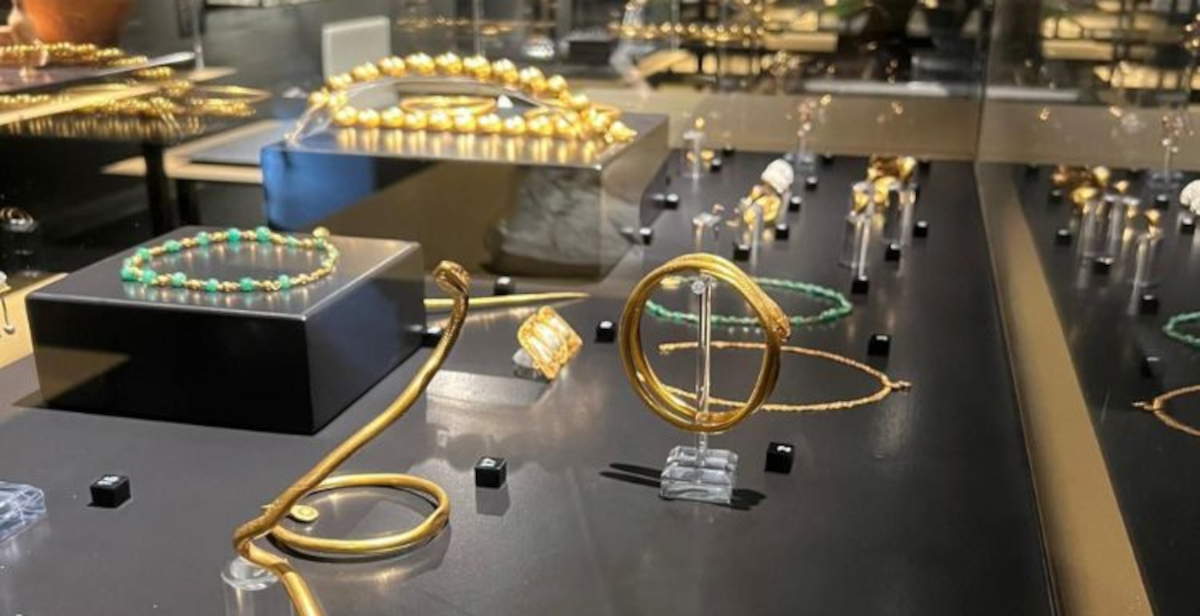The Rocca Roveresca in Senigallia is hosting, from June 12 through Dec. 8, 2025, the exhibition The Shape of Gold. Stories of Jewelry from Ancient Italy, curated by Massimo Osanna, director general of museums, and Luana Toniolo, director of the National Etruscan Museum of Villa Giulia in Rome. The exhibition, set up in the Renaissance rooms of the fortress, features a significant selection of more than 400 artifacts of ornamental productions from peninsular Italy and Sardinia, dating from Prehistory to the early Middle Ages.
The exhibition is spread over two floors of the fortress and is the first exhibition event after recent works to upgrade and improve the rooms’ air conditioning systems, carried out with funds from the National Recovery and Resilience Plan (NRP). These interventions have brought the structure, which dates back to the 15th century, up to contemporary museum standards in terms of conservation and usability.
“The exhibition that opens in the ancient fortress of Senigallia,” says Director Luigi Gallo, “demonstrates first of all that with the synergistic work of various institutions, Italian museums know how to network to enhance and promote our extraordinary heritage, passing it on to future generations; moreover, the exhibition certifies once again how important it is that the museum, in addition to being a privileged place of exhibition, also establishes itself as an environment dedicated to scientific research: a living and vital space for creating endless opportunities for knowledge.”
The scientific project is being developed through the collaboration of several former Regional Museum Directorates (Sardinia, Campania, Calabria, Molise, Marche, Puglia, Basilicata) and the Pompeii Archaeological Park, as part of the National Museum System. The aim is to enhance the collections and treasures preserved in numerous Italian museums, networking heritages that document the history and goldsmithing art of ancient Italy. The exhibition has already stopped at the National Archaeological and Ethnographic Museum “Giovanni Antonio Sanna” in Sassari and the Archaeological Museum of Santa Maria delle Monache in Isernia, before coming to Senigallia. The choice of the Rocca Roveresca fits the event in the wake of two lines of action pursued in recent years: attention to accessibility and interaction with local culture. In fact, a number of supports with reproductions of the exhibits have been created to facilitate their enjoyment by a wider and more diverse audience. In addition, the exhibition includes a small photographic display in dialogue with the exhibits, which ties in with the designation of Senigallia as the City of Photography.



Jewelry, which has always been an indicator of personal and social identity, has been an expression of beauty, seduction, social ties and fashion in different eras. Gold, a noble and lustrous material, has been a favorite material for the creation of fine ornaments, but artistic production has also involved other metals such as bronze, iron and silver. Goldsmithing also made use of materials such as gems, glass paste, amber, shells, bones and animal teeth. Such a wealth of materials testifies to a long tradition of technical experimentation, aesthetic taste and craftsmanship, as well as telling of the relationships of exchange and cultural contamination that characterized the people of the ancient Mediterranean.
The artifacts on display in Senigallia constitute a geographical and chronological journey that spans the entire Italian peninsula and Sardinia, from prehistoric times to the early Middle Ages. The objects not only represent aesthetic value but also hold symbolic meanings related to such areas as the sacred, magic, power and social prestige. The exhibition offers the opportunity to observe precious artifacts that, in addition to their material value, document fundamental aspects of ancient Italian history and cultures. The exhibition is also an opportunity to highlight the results of collaboration between different museum and archaeological institutions, combining expertise and resources to organically enhance a dispersed and often little-known heritage.

 |
| More than 400 jewels of ancient Italy, from prehistory to the early Middle Ages, on display at the Rocca Roveresca in Senigallia |
Warning: the translation into English of the original Italian article was created using automatic tools. We undertake to review all articles, but we do not guarantee the total absence of inaccuracies in the translation due to the program. You can find the original by clicking on the ITA button. If you find any mistake,please contact us.